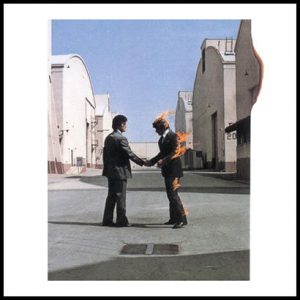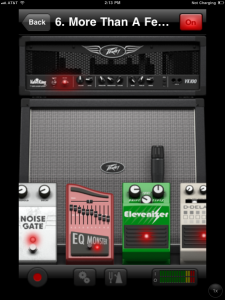Here’s the song — the solo starts at 2:03.
Bear with me through this lengthy story. This song brings a strong memory to me every time I hear it, but it takes a while to tell.
In the summer of 1982, when I turned 15 and had just gotten my learner’s permit, I experienced one of the central adventures of my youth. It was well known to the boys of San Marcos High School that every summer, Texas high schools would send their top drill team girls to Southwest Texas State University (now simply Texas State) to participate in Drill Team Camp.
The girls were holed up in Falls Hall a featureless dormitory facing University Drive, one of San Marcos’ busiest thoroughfares. One afternoon, two friends and I drove down and “chatted up” some of the young women as they poked their heads out of the dorm windows. My friend Hunter was a pretty smooth operator and persuaded a couple of the dancers to sneak out with us later that night. All we had to do was figure out how to get them out without their chaperone knowing. We talked about it and decided we would bring a ladder so they could climb out of their second-floor window.
 I seriously thought they were joking, but I snuck out at 11pm that night and drove down to the dorm with an aluminum extension ladder crammed into my parent’s 1979 VW Bus. My other friend Bob decided it was too risky and declined, but Hunter was gung-ho and the girls were true to their word. We propped the ladder up against the side of the dorm in full view of the entire town and they climbed out of the window.
I seriously thought they were joking, but I snuck out at 11pm that night and drove down to the dorm with an aluminum extension ladder crammed into my parent’s 1979 VW Bus. My other friend Bob decided it was too risky and declined, but Hunter was gung-ho and the girls were true to their word. We propped the ladder up against the side of the dorm in full view of the entire town and they climbed out of the window.
We drove out to 5-Mile Dam, a secluded swimming hole on the Blanco River. It was dark and we were the only ones there. Hunter took one of the girls off into the woods to do who knows what (ok, I think I know), leaving me in the van with the other drill team majorette, whose name I don’t remember, but I think might have been Beth.
I slipped my favorite mix tape into the casette player and we talked. And talked. And talked some more. I knew that I should make a move, but I couldn’t work up the guts. Then “Lights” by Journey came on the stereo, and I knew this was my chance. It was the perfect moment. I swiveled in the driver’s seat and looked at her. Her young, pretty face was lit up by the radio’s light.
“Beth,” I said.
“Yes?” she replied, looking at me expectantly.
I paused. “Do you like Journey?”
“Um, sure…” she said. I imagine she sounded disappointed, but who knows?
And that was it. The moment passed. Hunter and his girl emerged from the trees and we drove back to the university. When we got back to the dorm, the girls invited us into their room, which they shared with two other dancers. Of course, we wanted to go, but didn’t like the idea of leaving the ladder propped up against the side of the building for anyone to see. So we climbed into their room and pulled the ladder up through the window after us. We sat on their beds talking, with my Dad’s extension ladder stretched out on the floor, until 5 am.
I had another adventure trying to sneak back into my parent’s house at 6 am, but that’s another story and I’ve already written too much. It’s probably for the best that nothing unwholesome happened with Beth, but I’ll always think of “Lights” as a reminder of missed opportunities in the midst of boyhood adventure.
Journey’s guitarist, Neal Schon, was and is an amazing inspiration to me — both before I became a guitarist and since. As much as Steve Perry’s voice, the guitar work on Journey songs is essential to creating their signature sound — Schon’s playing is always distinctive and technically brilliant. Lights is certainly not the most difficult Journey solo I could have chosen, but the meaning the song holds for me won out over my desire for a challenge. There are certainly some difficult parts, but I think I will get it down fairly quickly.
Although Neil played a Gibson Les Paul during the time that Lights was recorded, he went on to design and sell his own line of guitars, one of which is shown below.

Resources
Backing Track: http://www.guitarbackingtrack.com/play/journey/lights.htm (Not great, but the best I could find)
Instructional Video: http://www.youtube.com/watch?v=v2W9rytIv4M
Tabs: http://www.ultimate-guitar.com/tabs/j/journey/lights_ver2_tab.htm






